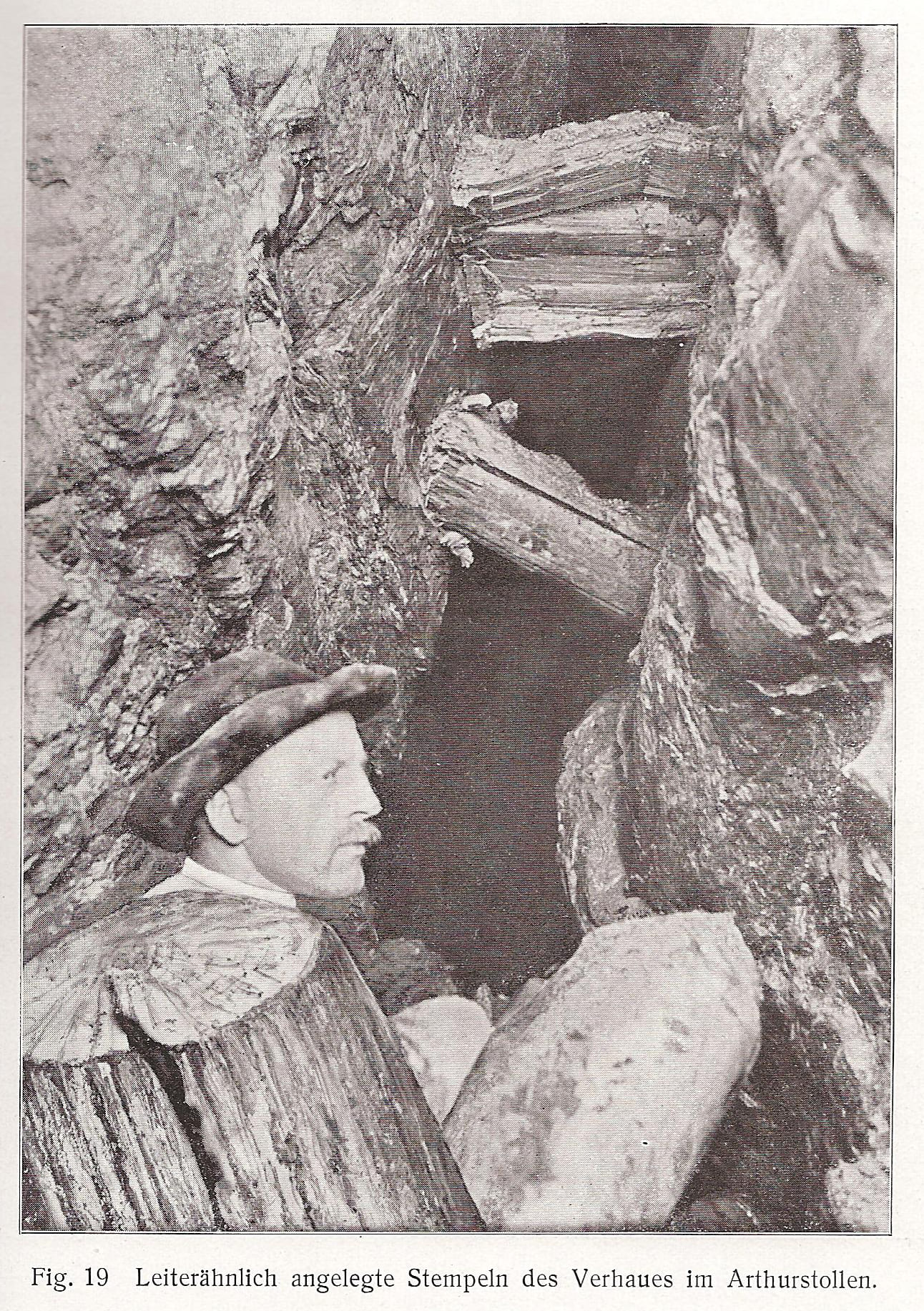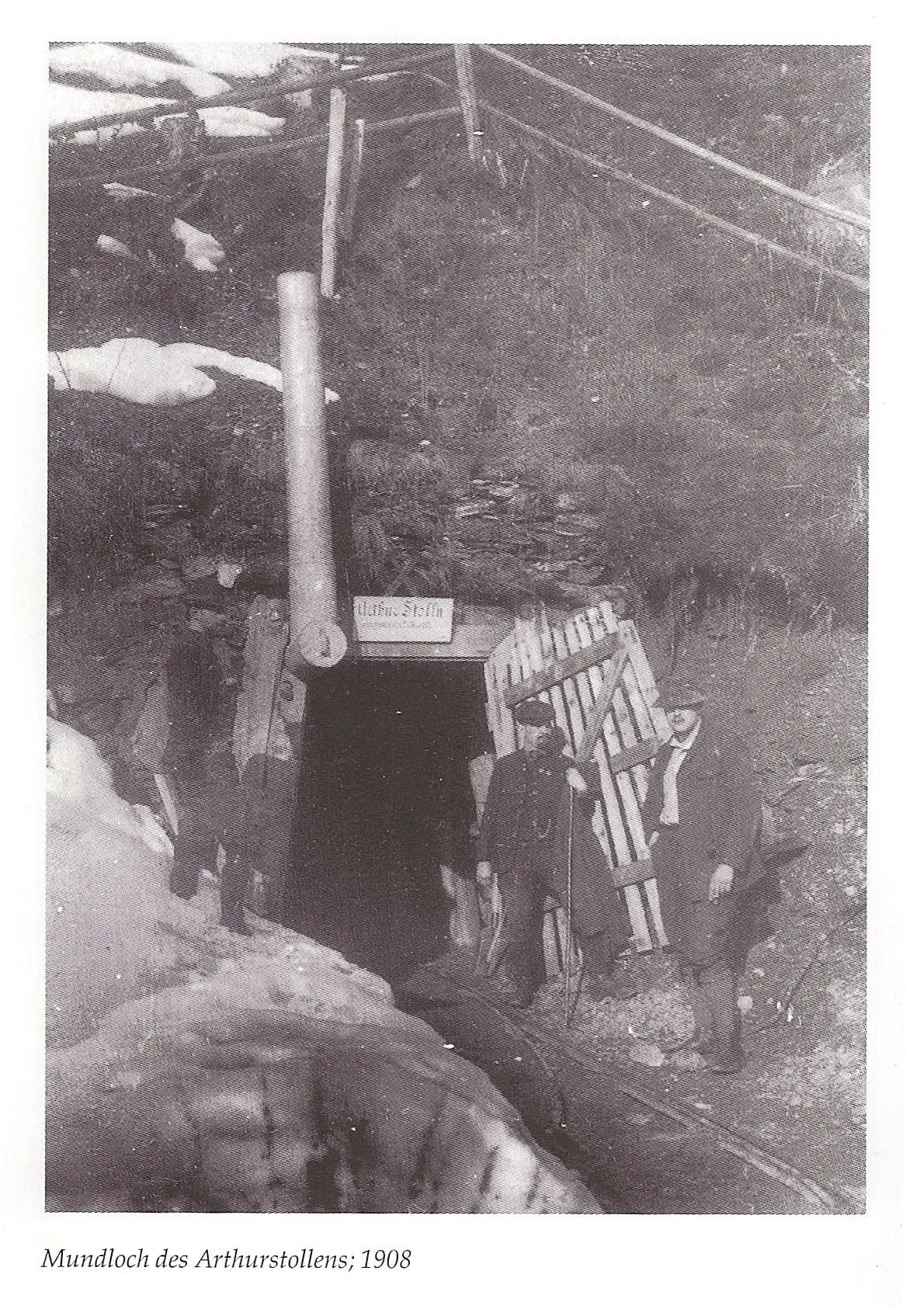A Miner's Life - 19th/20th Centuries
We know about the miners food because
they suffered from scurvy due to the onesided
diet – mainly pancakes and hardly
any meat, fruit or vegetables, which is why
a doctor around 1865 recommended cattle
breeding with dairy farming. The stone
walls around the pastures at Griesfeld – in
the Hochkeil region, below the Hochkönig
mountain – were built by the miners by
clearing the pastures from rocks.
The mining industry maintained homes
for unmarried miners, such as Sepp Bradl’s
burned-down inn.
If they started a family, they lived in the buildings recognizable by the double projecting sections (especially in Mühlbach). Of course, in addition to the miners (who initially moved here from Tyrol), farmer’s
sons and farmhands were also active in the mining industry. Many women were also employed in the processing stage until the closure. There is evidence of potato cultivation at up to 1,500 m and grain cultivation at up to 1,200 m above sea level. If you consider that you need around 3 hectares of agricultural land to make a living for one person, you can see that the broader surroundings also provided for the miners and those in the smelting works, which was done in Mitterberghütten (Bischofshofen).
Kids
The history of Hüttau
The name Hüttau comes from the old smelting works in this area. Ironworks are places where metals such as copper were processed. Over 1000 years ago, in the first half of the 10th century, Salzburg Archbishop Pilgrim I sent a priest to Hüttau.
Mining in Hüttau
There was a copper smelting works in Hüttau around the year 1515. This is a place where copper was smelted. Copper is an important metal that is used in coins and wires, for example. The copper mine at Larzenbach, where the copper was mined, was already in operation in the 13th or 14th century. It was first mentioned in old documents in 1549.
An old building and an exciting museum
The building, which today houses the municipal office, the tourist office and the mineralogical museum "Ores, Gold and Minerals", was built in 1594. The last owners of the mines, the Feuersenger family, used to live there.
The "Ores, gold and minerals" museum
There are around 4,000 exhibits in the museum. There you can see various ores from the Salzburg mines and marvel at the largest gold find in the Eastern Alps. The most beautiful finds from the "Larzenbach Copper Mine" show mine can also be seen there.
The history of Hüttau
The name Hüttau comes from the old smelting works in this area. Ironworks are places where metals such as copper were processed. Over 1000 years ago, in the first half of the 10th century, Salzburg Archbishop Pilgrim I sent a priest to Hüttau.
Mining in Hüttau
There was a copper smelting works in Hüttau around the year 1515. This is a place where copper was smelted. Copper is an important metal that is used in coins and wires, for example. The copper mine at Larzenbach, where the copper was mined, was already in operation in the 13th or 14th century. It was first mentioned in old documents in 1549.
The miners found chalcopyrite that consisted of 15% copper. This means that 100 kilograms of ore contained 15 kilograms of copper. This chalcopyrite was processed in the "Ernst Hütte" near Niedernfritz. In the middle of the 16th century, around 150 people worked in the mines and smelting works in Hüttau - that was the best time for mining in this region!
The Larzenbach copper trade union
In 1853, a number of miners founded the Larzenbach copper mine. This was a group of ten miners who mined copper together. They worked in the Barbara mine and took the ore to the smelter in Lend until 1869, where the copper was smelted out.
An old building and an exciting museum
The building, which today houses the municipal office, the tourist office and the mineralogical museum "Ores, Gold and Minerals", was built in 1594. The last owners of the mines, the Feuersenger family, used to live there.
The "Ores, gold and minerals" museum
There are around 4,000 exhibits in the museum. There you can see various ores from the Salzburg mines and marvel at the largest gold find in the Eastern Alps. The most beautiful finds from the "Larzenbach Copper Mine" show mine can also be seen there.
The history of Hüttau
The name Hüttau is derived from the former smelting works in this region. In the first half of the 10th century, Salzburg Archbishop Pilgrim I sent a priest to the village, from which can be dated back that settlement began around this time. A copper smelting plant is mentioned in the annals around the year 1515. The copper mine next to the Larzenbach probably dates back to the 13th/14th century. It is first mentioned in documents in 1549. The copper pyrite extracted, containing approx. 151TP3 tonnes of copper, was processed in the "Ernst Hütte" near Niedernfritz. Records from the middle of the 16th century report around 150 employees in the Hüttau mining and smelting plant. This period also corresponded to the heyday of mining while the end was already approaching.
Mining in Hüttau
The Larzenbach copper mine was founded in 1853. Ten miners were employed to mine the ore in the Barbara mine field and in the poke works and wash screens. The ore concentrates were delivered to the Lend smelter until the end of mining in 1869.
Museum and show mine
The building, which houses the municipal office, tourist office and the mineralogical museum "Ores, Gold and Minerals", was built in 1594 and served as the seat of the last tradesmen (Feuersenger). The exhibition comprises around 4,000 exhibits. In addition to a variety of ores from the Salzburg mines, the largest gold find in the Eastern Alps can be found here. Of course, the most beautiful exhibits from the "Larzenbach copper mine" show mine are also on display.



